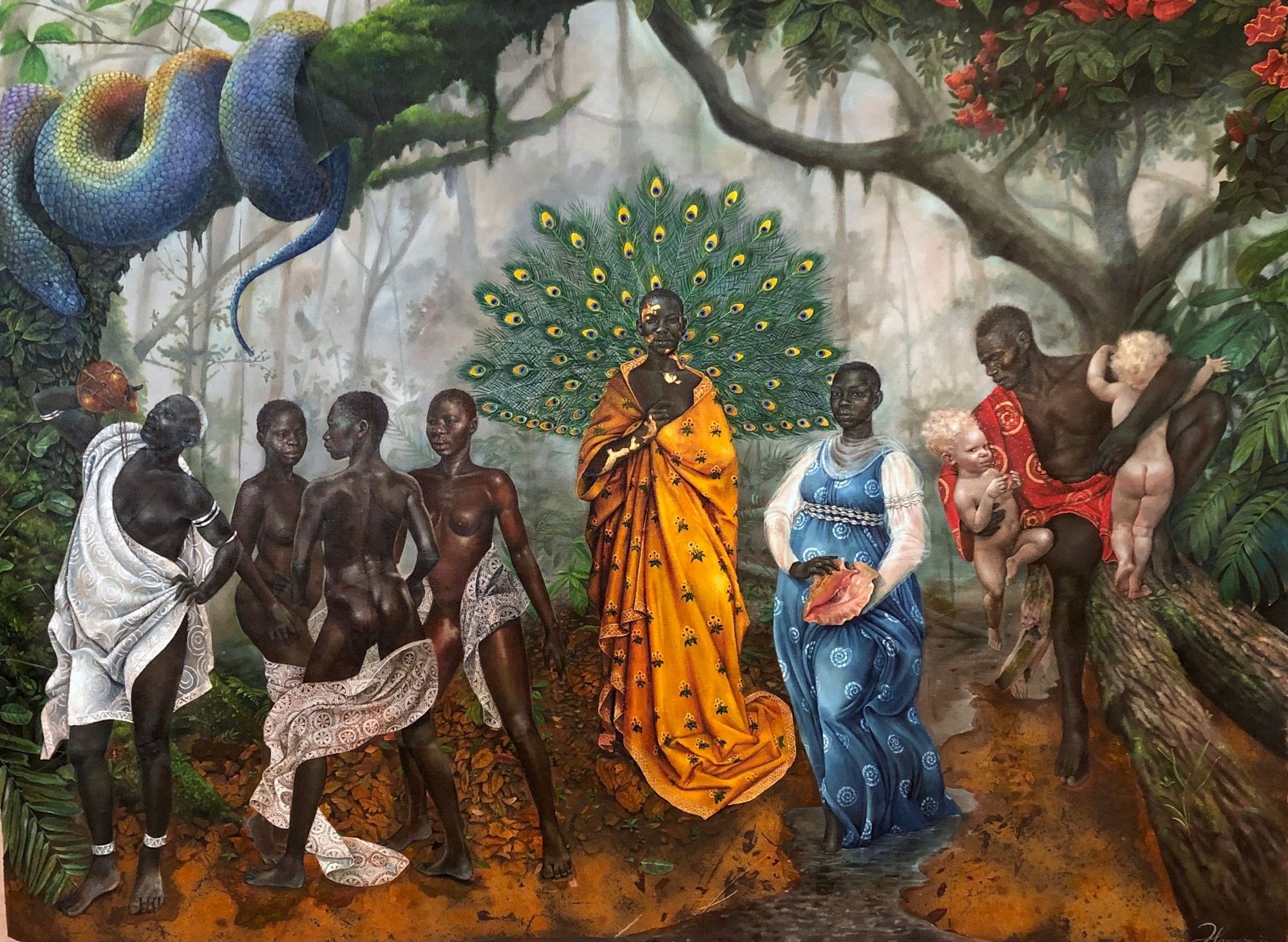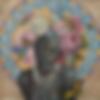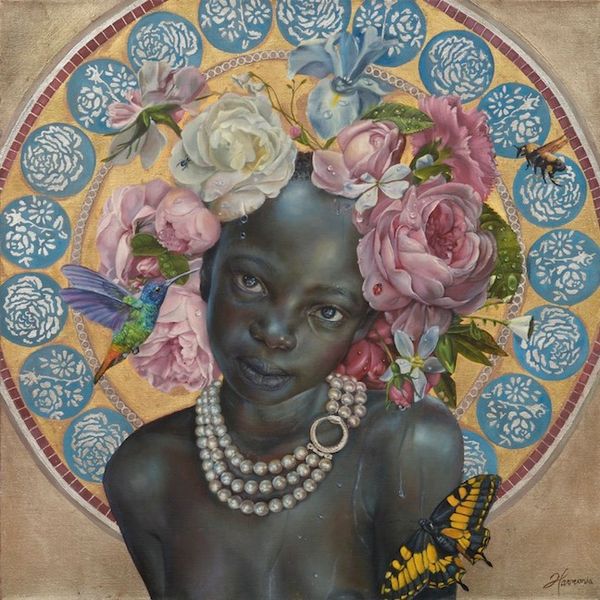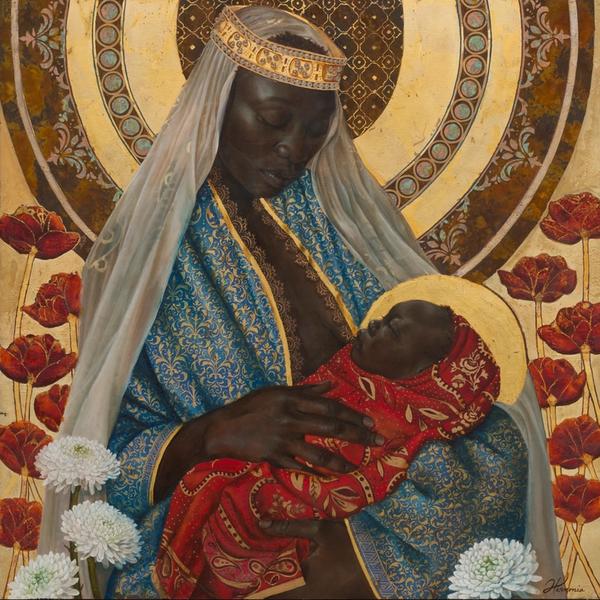Ase
Oil on Belgian Linen, 48" x 60"
Asé is the life force, energy, and creative power in all living and nonliving things. Asé is made visible in the painting—from the orishas that guide one through life, to the environment of the African jungle with lush, tropical plants, rain, mist, and red soil. The work celebrates the orisha of love and fertility Oshun, identified by the golden markings on her skin and wrapped in a golden robe, wearing a headdress of peacock feathers, referencing her transformation.
The youngest orisha, Oshun represents completion and harmony. She is ever loved and supported by her family. On the far left, Obatalá sips palm wine, a reference to the story in which the orisha drank too much while creating humans. He became inebriated, forgetting to include an arm here, a leg there, an ear elsewhere, thus explaining various abnormalities. Nearby, the three aspects of existence—the Breath, the Soul, and the Body—sway together in the breeze. Yemayá, appears on the right, identified by her blue and white dress and the cowrie shells she wears on her arm and waist. As the orisha of the ocean, her presence complements her sister Oshun, goddess of the rivers. Next to Yemayá, draped in red, is Shango who struggles to hold his clamoring children, the Ibeji twins.
Rosales’s placement of specific colors and lines guides audiences around the painting in a counterclockwise fashion. From Shango’s red robe, one spies the red flowers on the top right, and then follows along the branch extending up and over to the left before landing on the moss- and ivy-covered tree, where the creation snake Osumare is wrapped along the branch. An orisha with origins in West Africa to whom Rosales pays homage, Osumare’s rainbow tones represent the diverse colors of the African diaspora.
Inspired by Sandro Botticelli’s Primavera painting (1477–82), Rosales’s Asé presents life itself.






